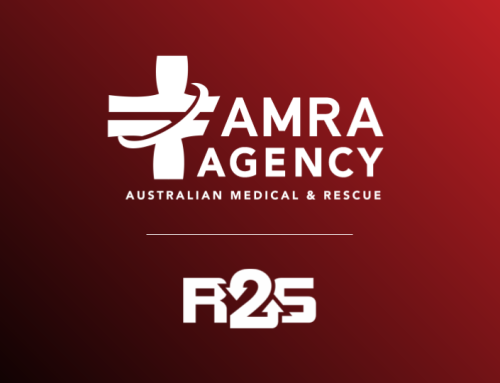I’ve been working around customer aggression and workplace violence for close to 15 years now. In that time, I’ve worked amongst a variety of industries including, but not limited to:
- Hospitality and liquor retail
- Private security
- Hotel and resort industry
- Hospitals and healthcare
- Human services and community support roles
- Travel and aviation
- Funeral industry
- Service stations and late-night retail
- Fast food
- Banking
- Utilities
- Government service centres
- Local council functions (parking, waste management, etc.)
All of these industries have had their own issues with customer aggression and workplace violence. Whether we like to admit it or not, when we put our people into customer-facing roles, we expose them to the risk of aggression. In roles where they will occasionally either give someone unwanted news or deal with alcohol and/or drug affected persons, that risk is magnified.
To their credit, I haven’t had a single client or employer who simply didn’t care about their staff being abused or assaulted at work. Everyone I spoke to agreed that not feeling safe at work wasn’t acceptable. They had all, to some degree, implemented treatments to control that risk.
So why wasn’t it working?
After 15 years of researching and working in this field, these are the most common mistakes I’ve found well-intentioned organisations making.
This may seem like an obvious point to start with, but it’s staggering how many organisations have drafted a statement that says something to the effect of “We have zero tolerance for aggressive, threatening or intimidating behaviour in our workplace” and then… crickets. No support. No training. No follow up on reported incidents. No investigations team. No change to EAP. No change in company culture. A position statement is not enough. You need action.
Policy does not change behaviour. Culture changes behaviour.
Obviously I’m a big fan of training. I think every human being on the planet should have to do mandatory training in conflict management. I’d love to see “verbal self-defence”, situational awareness, respectful interaction training and basic physical self-defence taught in high schools across the nation and beyond. But that isn’t the case, and we do sometimes get employees who are blissfully unaware of their surroundings, or how to communicate with someone who is emotional or agitated. For these people especially, training is essential.
HOWEVER.
The approach taken by many organisations is to do one of the following:
a) Find the person on staff who has a black belt in some martial art and get them to do a self-defence workshop (mostly smaller businesses)
b) Hire an external expert consultant for a training day
I’m not even going to bother telling you what’s wrong with the first option. I hope if you’re in my LinkedIn network, you’re already rocking back and forth in the corner at the very idea of sourcing one of your own people (presumably with no insurance and no verifiable background in training design) to deliver martial arts training to fellow staff.
The second option is far more common, and usually comes as the result of a scare or a knee-jerk response to an external incident such as an active armed offender event or homicide. Well-intentioned as it may be, and there are plenty of brilliant experts out there who can deliver amazing training, no trainer can create lasting change or capability in a once-off burst.
Training to manage workplace violence and aggression requires an organisation-wide commitment to participate in the training regularly. It requires a decision to find time- and cost-effective ways to keep the material refreshed. The organisation must truly embrace a culture of excellence when it comes to conflict management. It simply cannot be done with a tick-box mentality of “Oh, we had a guy come in and teach about that last year. We’re good.”
A logical and sequential training plan that builds layers of skills over an extended period of time is the only way to truly build capability. This does not have to be expensive, as the methods of delivery have evolved from needing to gather 100 people into a lecture theatre for a day, but it does require upfront commitment from the organisation to make it happen.
We’ve all seen the cycle play out before. A safety incident (of any kind) occurs, and there’s a rush to spend money on visible treatments to address the issues. We can speculate all day about the motivation for this sudden availability of budget, but that’s beside the point.
Often one of the first things that money is spent on is a new engineering or tech-based control. Partly because most facility managers have a drawer full of gadget brochures, and partly because there’s generally a quick turnaround time between ordering a product and having the control in place. It’s certainly easier to realise installation of a duress system than it is to effectively train all personnel or conduct a cultural change project.
While these treatments do make up an important component of an integrated risk reduction campaign, they are next to useless if they are not rolled out with appropriate education surrounding why it is being installed, how to use it, and what it means for the broader organisation.
Let’s take, for example, a personal duress pendant being introduced to a group of social workers that provide remote and home-based care.
Acme Social Care, in a panic to protect workers after an incident, purchase 100 duress pendants for their 150-strong workforce, allowing for one pendant for every staff member in the field plus a few spares. The workers themselves have no knowledge that this is happening, they just show up to work one morning and there is a desk full of tiny black devices they are supposed to hang from their neck. The company operations manager gives a five minute overview of the device, how to activate it if you’re in trouble, and a phone number to call if you have any difficulties. Of course, half a dozen staff miss this briefing as they were running late, in the bathroom, or still getting coffee. No matter, it’ll be repeated later.
Now the staff are in the field, attending to duties, and they realise they have questions.
How do I know if the button has worked? Is someone going to call me? Are the police going to come?
Under what circumstances is it okay to press the button? If client is raising their voice is that a duress situation? Or should I wait until they’re threatening me?
What are the consequences for me if I press it and it was nothing? Will I be shamed for overreacting?
What are the consequences for my client? I don’t want them to get in trouble with the police.
How long is it going to take someone to get here if I really need help?
These questions and many more fill their heads with doubt, and because wearing the pendant is not habitual, quite often they get left in vehicles during visits. After a period of no incidents and no follow up training, the majority of the staff are putting the pendants in their bags or leaving them in their cars. Often they are not accounted for at the end of shift, and therefore not charged for the next shift. The project has been expensive and has achieved very little in terms of making staff safer.
Rolling out an engineering or tech-based solution without accounting for the myriad human factors that will determine the overall effectiveness of the risk control is, in almost all cases, a massive waste of money.
The next mistake is a double-header but the second part is an unfortunate and unavoidable byproduct of the first.
All human beings love a good hero narrative. We want to support the leader who fought through adversity, suffering, anguish, despair and hardship and soldiered on because their sense of purpose was just so strong that they wouldn’t quit. It’s a tale as old as time. I grew up in the martial arts, and warrior culture was an integral part of my world view. I love the stories of the Spartans, the Samurai, and the various other ascetic warriors of history. Deep down, I think we’re all inspired by individuals that hint to our own internal capacity to endure.
I’m not for a second saying that this is a bad thing. However, at an organisational level we must be careful not to champion and celebrate those that wilfully engage in behaviours that increase their risk factors in unhealthy ways. I’ve seen this especially in the medical and healthcare world, where the doctor that works 20 hours straight is revered for his dedication – despite the fact that we are painfully aware that the chance of catastrophic mistakes increases dramatically with fatigue and sleep deprivation. Or the nurse that is punched by a patient and continues on to finish her shift, despite a splitting headache, is celebrated for her toughness.
Yes, dedication, toughness, and perseverance should be celebrated. But do we want our young doctors pushing themselves through exhaustion to emulate their heroes? Do we want nurses to continue working and making critical decisions while dealing with a head injury? We must be so careful with the messaging we send by celebrating some actions and subtly ignoring or condemning others.
How often do we champion the worker who was spat upon at work, and months later sought counselling when they realised that they were angrier at home than they had been before? Is this not something we would prefer to encourage?
The unfortunate secondary effect of worshipping those who survive horrible ordeals is that it serves to minimise the effects of “lesser” traumas.
Though completely unintentional, what we are communicating is:
“You were yelled at? That’s nothing, Susie was spat on and just wiped it off!”
“You were punched in the stomach? That’s bad, but Derick had a tooth knocked out and didn’t even miss a shift.”
When building capacity to manage workplace aggression and occupational violence, most organisations quite rightly focus on the Before and the During. I agree wholeheartedly that the vast majority of resources should be allocated to the prevention and preparation stages of managing this risk. However, neglecting the aftermath is a common mistake.
What is your capacity for getting back to normal?
Do you have support and counselling services available for affected staff?
Is the same support available to members of the public/customers that may have been witness to the incident?
What resources do you have to manage any brand or reputational damage you may incur?
Do you have a legal team to support your staff should there be civil or criminal action taken as a result of the incident?
What is your internal investigative capacity? Many organisations have a reluctance to involve police unless a serious assault has taken place. If that’s you, how are you going to investigate this issue and enact key learnings? Does your WHS investigation team have the skill set necessary for investigating assaults or other violent criminal actions? How will these learnings be compiled, presented and acted upon?
If you don’t have these resources planned before an incident occurs, it is foolish to believe you will find them while managing a crisis.
“You’re traumatised because someone threatened you? That’s nothing, Fatima was held up at knife point last week and she’s fine!”
Obviously, none of us would deliberately send this message, but we must be careful of the inadvertent messaging that occurs when we champion exceptional survival stories.
This is another mistake we can chalk up to “Good intention, poor execution.”
When companies or organisations decide it’s time for them to get serious about tacking occupational violence or customer aggression, they often begin looking internally to who should take ownership of the program. Often, it will fall at the feet of the person who brought it to attention. Other times, it’ll be assigned to someone who appears to be in a related area such as security, WHS, or HR. That means that the occupational violence program could sit in a chain anywhere from facilities management to operational services to corporate services to safety. And worst of all, the person ultimately responsible for it may have no idea what to do with it.
- Just because someone is a security manager does not mean they understand the intricacies of aggression and the various controls that can be used to lessen it.
- Just because someone is in HR and understands training does not mean they know how to talk about violence.
- Just because someone is in safety doesn’t mean they can keep people safe from customer aggression.
The same as you wouldn’t put your fire advisor in charge of business continuity without some kind of relevant experience and education, we shouldn’t be throwing personnel with a tangential relationship to violence into the frying pan of managing aggression for the organisation.
Managing violence and aggression is a specialised skill. If you do not have someone with the correct skillset in-house, there is nothing wrong with deferring to external expertise and work towards building internal capacity in a structured manner.
This is probably the most toxic mistake of all, and one of the most difficult cultural barriers to overcome for any workplace violence program to prove effective. Until we drop any allusion to the idea that being abused, threatened, intimidated, or assaulted in the workplace is “normal” and to be tolerated, no progress can be made. While new members of the workforce feel shamed for speaking up, no culture will change. While administrators feel that the problem is unfixable or permanent, no funding will be made available. We MUST change this toxic attitude if we are serious about addressing the problem of violence and aggression in the workplace.
In summary, most well-meaning, well-intentioned organisations will make one or more of these mistakes along the way. That doesn’t make their efforts useless. Rather, it’s like driving your car all the way to work in second gear. You might get there, but you’re not going to be as efficient as you’d like and you’re probably going to wonder why everyone is looking at you funny. You might also do some expensive damage along the way.



